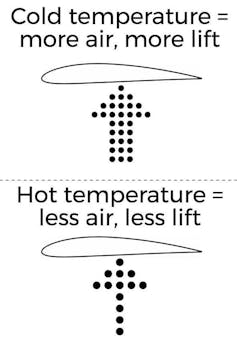Global temperatures have been steadily rising for decades, and they will almost certainly continue to do so. In some regions, there is evidence that the hottest temperatures may increase at a faster rate than the average, further stacking the deck in favor of extreme heat. These hotter temperatures will reduce air density and make it much more likely weight restrictions are needed for flights taking off during the hottest parts of the day.

Many sectors of the economy, including the aviation industry, have yet to seriously consider the effects of climate change. The sooner, the better: Both airport construction and aircraft design take decades, and have lasting effects. Today’s newest planes may well be flying in 40 or 50 years, and their replacements are being designed now. The earlier climate impacts are understood and appreciated, the more effective and less costly adaptations can be. Those adaptations may even include innovative ways to dramatically reduce climate-altering emissions across the aviation sector, which would help reduce the problem while also responding to it.
https://theconversation.com/how-hot-weather-and-climate-change-affect-airline-flights-80795
No comments:
Post a Comment